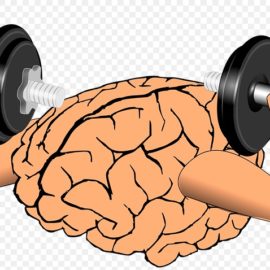

This article is an excerpt from the Shortform book guide to "An Unquiet Mind" by Kay Redfield Jamison. Shortform has the world's best summaries and analyses of books you should be reading.
Like this article? Sign up for a free trial here .
What is it like to take lithium? What are the side effects of lithium therapy?
In her memoir An Unquiet Mind, Dr. Kay Jamison presents a deeply personal account of her experiences with lithium therapy. She felt as though the drug has dampened the edges of her emotional experience, turning her into a shell of her real self.
Read about Kay Jamison’s experience with lithium therapy, as she recounts in her book An Unquiet Mind: A Memoir of Moods and Madness.
Healing Begins
Reluctant as she was to acknowledge her illness, Jamison decided to seek psychiatric help after she experienced a hallucination during one of her manic episodes.
Her therapist was the chief resident of UCLA’s Neuropsychiatric Institute while she was a clinical psychology intern. He was tall, handsome, and incredibly intelligent. He’d supervised her work with patients and served as a rock of compassion and professionalism. He believed in medication to treat the symptoms of mental illness, but he also saw the value of psychotherapy to heal the mind. When she decided to seek professional help, she knew she would be able to trust this man. She also knew he was too adept in his field and too intelligent to manipulate.
Her first appointment was a terrifying experience. She was embarrassed and vulnerable, having lost complete faith in herself and her mind. But when she entered the room, the doctor spoke to her with such reassurance that a crack of light appeared in the darkness. He was patient as she rambled incessantly about her condition. When she finished, he asked her a slew of questions about her behavior and symptoms. She knew these questions well, having asked them to patients hundreds of times during her education and professional work.
When the examination was over, the doctor stated unequivocally that Jamison suffered from manic-depressive disorder and prescribed lithium therapy. She was relieved to finally have a diagnosis and plan for help, but she feared what the medication would do to her. She used every excuse for her behavior she could find to explain it besides the diagnosis, but the doctor remained firm. She finally conceded and began her journey toward healing.
Experiencing Lithium Therapy
After her psychiatrist prescribed lithium in fall 1974, Jamison experienced a reprieve from the mania. Her dark and dangerous depression had also subsided. But what replaced those symptoms was an immense grief.
In her manic states, Jamison experienced the sensation of flying. Her euphoria was held in the clouds. She often glided through space and around the rings of Saturn. It was a beautiful, ethereal high, and when it was gone, she missed the high-flying, starry beauty of her mind.
The problem was that Jamison didn’t recognize her disorder as an illness. Her high moods were as much a part of her as anyone’s moods were a part of their core personalities, whether psychotic or not. In losing the highs, Jamison lost a piece of her soul, and that was difficult to let go of. The new person she became was unrecognizable and a massive bore. What was normal to everyone else was dull, stifling, and unfruitful to Jamison.
Physical Side Effects of Lithium Therapy
Another part of her predicament stemmed from the physical side effects of lithium therapy. High doses of lithium lead to frequent nausea and vomiting, and Jamison suffered from both. She often slept in the bathroom at night or was severely ill in public. Sometimes, the lithium made her lose motor functions, and she would tremble, lose coordination, and slur her speech. These side effects carried the additional disadvantage of mimicking inebriation or drug use. In fact, Jamison was once pulled over by the police and failed a roadside sobriety test. They only let her go after she provided the name of her psychiatrist and the prescription bottles as evidence of what was wrong with her.
However, by far the worst loss was her reduced mental acuity. The lithium therapy made it hard for her to concentrate or read. Her vision sometimes blurred to the point of obscuring the text. When she could see, she couldn’t comprehend what she was reading or remember any of it. She went from reading 3 or 4 books a week to reading only short journal articles, poetry, and simple children’s books.
One of these books summed up Jamison’s situation perfectly. The book was The Wind in the Willows, and she read it frequently. A particular passage about the mole brought her to tears. In the story, Mole walks through the forest after returning from adventures around the world. He smells his old home in the air and follows the scent until he finds it. He remarks how much he missed the comfort and warm security of his home and the familiar aspects that had become part of who he is. The Mole’s sentiment mirrored Jamison’s feelings about the intoxicating life she’d lost. She was forced to live a lesser life now, and she resisted it whenever she could.
The War on Wellness
Even after her diagnosis, Jamison struggled for many years to manage her manic-depression. Part of this struggle was her resistance to take her medication despite her education and clinical work. Her reluctance wasn’t from stubbornness. There were many factors that caused her to resent lithium therapy.
As she believed in the early stages of her illness, she still felt as though she should be able to manage her mood swings on her own. Her military-bred resilience and independent upbringing reinforced this idea. Her sister, who was also battling volatile moods, tried to persuade Jamison to discontinue lithium therapy. She said it would steal Jamison’s spirit and the intensity of her experiences. She also said the medical profession wanted to turn Jamison into a shell of her real self. This advice was too tempting for Jamison, which meant it was dangerous. Jamison further distanced herself from her sister, essentially ending their already modest relationship.
The problem was that Jamison knew that part of what her sister said was true. The felt as though she was losing a part of herself because of of the medication. Lithium therapy helped dampen her mania and depression, but it changed her, too. And those changes seemed too great to abide.

———End of Preview———
Like what you just read? Read the rest of the world's best book summary and analysis of Kay Redfield Jamison's "An Unquiet Mind" at Shortform .
Here's what you'll find in our full An Unquiet Mind summary :
- How Kay Redfield Jamison first experienced a manic episode at the age of 17
- How her illness made Jamison buy taxidermied animals and multiple Rolexes
- Why Jamison believes there are positives to her manic episodes






